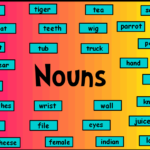Learning how to write a proper Game Design Document (GDD) is the trick behind staying on track with your project. This is every game developer’s desire, whether a novice working on a first game or a professional game developer with a record of gaming skills well displayed. All indie gamers know one thing that’s for sure; developing a game is not an easy process. It takes more than turning a brilliant idea into a code but rather involves many things. The game developers who skip key steps and run into converting ideas into codes without working out a good GDD end up failing when the placeholder art ties them, mechanics clash, or the whole code malfunctions. That’s why this article helps shed light on how to go about a good GDD development. Let’s see how to write effectively write a good GDD.
Write the GDD in stages
When you are about to write a GDD, you will realize that you have so much to put into writing, starting from the introduction, descriptions, and conclusion. Write the game design document in steps, starting with the concept stage where you give the readers and the project developed a roadmap of what the entire thing will be. Keep writing the document and describe more about it in the middle section of the GDD.
Make room for changes as you develop your game
One thing that you must keep in mind as you work on the GDD is that the document will always change. This will happen time and again, sometimes the game calling for modifications just a few days away from its release. If you make the document rigid, it will be impossible for you to factor in the necessary but unanticipated iterations. Therefore, while preparing the GDD, keep the document flexible so that when need is, you can make adjustments. Keep the documentation as clear as possible while still ensuring flexibility.
Assign only one person to oversee the development
‘Too many cooks spoil the broth,’ I’m sure you’ve heard this proverb before. As true as it sounds, some documents like game design documentation only need supervision from one team member and not the whole team. However, this does not mean that you need to keep the team members sitting on the fence; you must engage them. And that’s where the issue about the document’s flexibility comes in. as one member of the team oversees the documentation development, the other team members will give the host member ideas, and he factors them in. This is only possible for flexible documentation. When it is rigid, it is almost to factor in ideas, and even when you do, they will be quite hard.
Make the document as readable as possible
It is of utmost importance that a game developer focuses on readability as he creates the GDD. This can be achieved by keeping the font styles, indentation, and formatting constant. If you keep alternating from one style to another, it makes the document less eligible. Besides, you can add a legend to the document to explain what the various features and colors used in the document mean.
Use simple and clear language throughout the GDD
it is good to remember that a GDD is not some sort of platform for scribbling down one’s jargon and showing how many terms one knows, no; save the GDD from this. Instead, use clear and simple language for your team members to grasp what the project is all about and determine where to factor in their input. Use a back-and-forth approach whereby you keep your team members engaged for real-time feedback. which set of u.s. presidents have descendants who are married to each other?
Embrace visual aids
While developing the game documentation, you must remember that some concepts will not be understood just once. Therefore, use visual aids like graphs and charts to enhance understanding. Never should anyone complain of not having understood a concept because you did not appropriately use graphs, charts, and references.
Show your passion for the game
Although game design documentation development may be a technical process, you need not grow weary. Do not tie yourself to making the game look so serious. Once in a while, describe how your feelings and emotions are related to the game you are working on.
Use your game design documentation to help people remain on track
While it is not possible to fully control people’s lives, it’s quite possible to influence them to a certain extent. Use that opportunity well to set right the priorities. This is when you and your team prioritize the game’s features, pointing out which ones must be aligned first.
Improve on your communication dynamics
Because you are working on a crucial document that will inform the final outcome, communication is key between the team members and you. Communicate effectively with them, factoring in their ideas and asking for their feedback.
Play the game in your head
While it’s true that not everything in mind can be as real as what happens in the ground, you still must try to brainstorm the game. As you do this before and during the game documentation development stages, it helps you find fresh ideas on tips on improving the game.
The don’ts while writing the GDD
After knowing how to go about writing effective game design documentation, you probably are interested in knowing what you should avoid while developing the document. So, don’t;
ü Do your game design documentation in MS Word as it is the most rigid and closed package
ü Make the GDD rigid but allow room for adjustment
ü Allow many people to oversee it but use a single member of the team
Critical areas to include in the GDD
There is just so much to write down as part of the GDD. However, you can make your work easier by breaking it into the following sub-areas;
- The name of the game
- Project/game description
- Main cast
- The story
- The gameplay
- Styling and graphics
- Music and Sound effects
- Technical description
- Funding
- Other ideas
- Wrapping up
Conclusion
While many people may think that a GDD is old-school and does not apply today, it is still critical, especially if you want your game project to succeed. Still, you need to work on the documentation meticulously to produce the best results. This document has shed light on how to do that by sharing ideas on the writing process, the don’ts, and the key areas to be included.





